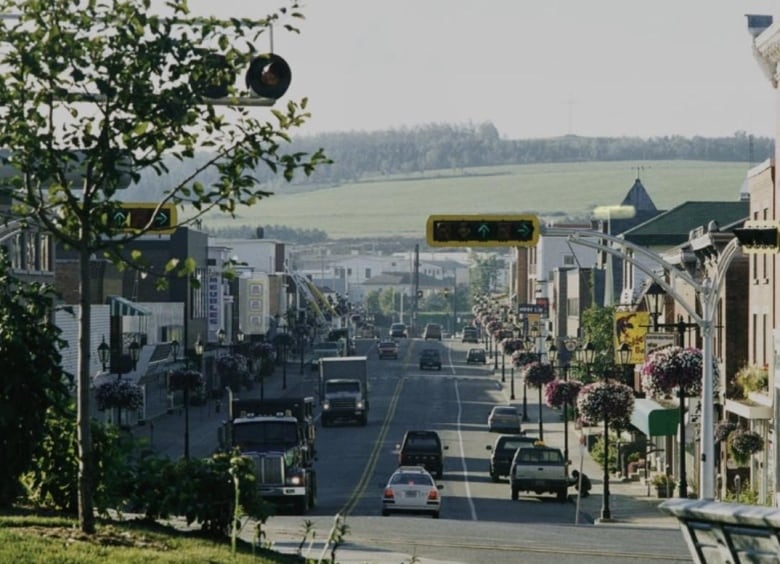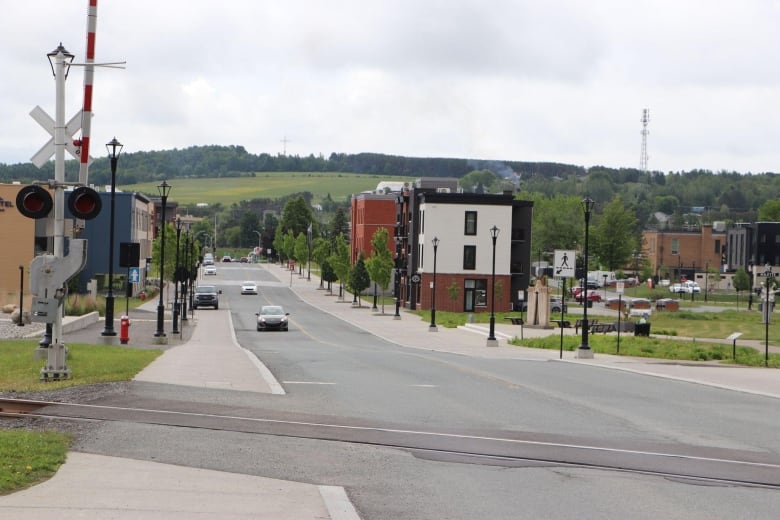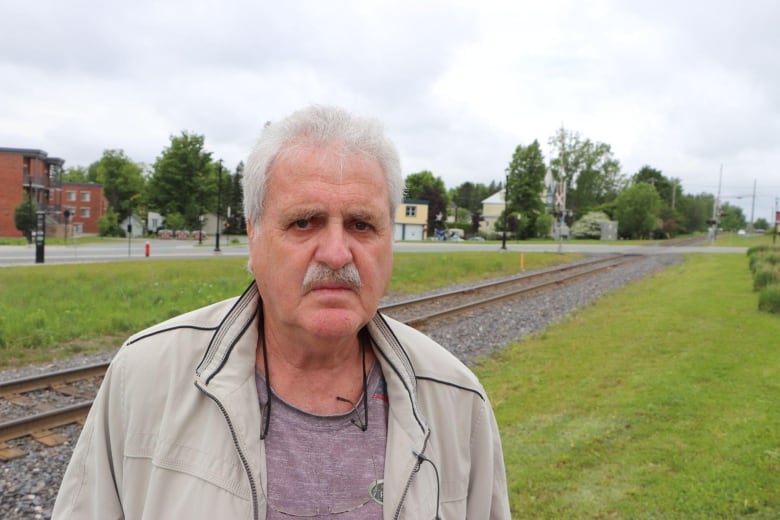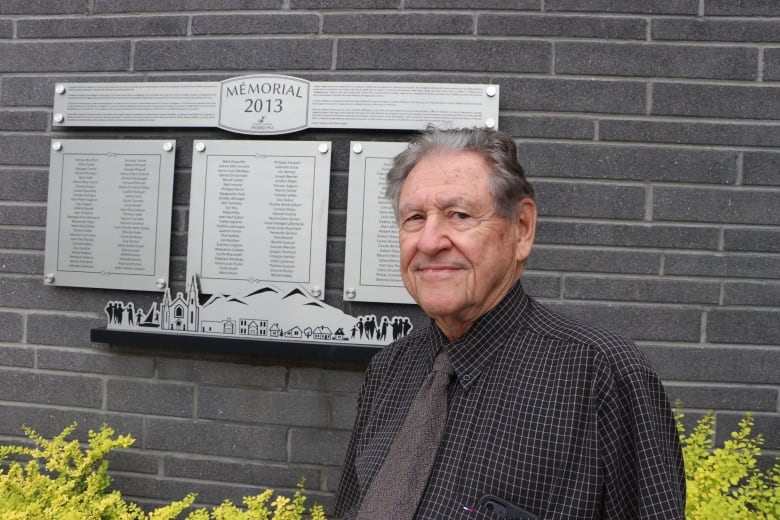
Gilles Fluet was grabbing a drink with some friends at Musi-Café, their local bar, on that fateful hot summer night in July 2013 when he suddenly felt the urge to leave.
Not five minutes after Fluet crossed the train tracks that run through town on his walk home, downtown Lac-Mégantic, Que., went up in flames.
“I left at 1:05 a.m. The train passed here at about 1:10 a.m.,” said Fluet, standing in the spot 50 metres from where the runaway train barrelled past.
“I was walking, and I felt something strange behind my back, and I turned around,” he said. “I didn’t even have the time to see the train pass. It was running at more than 100 kilometres per hour. There was no light, no motor running and no sounds.”

The train, carrying 72 tank cars of crude oil, had been left parked on the main line in Nantes, 12 kilometres northwest of Lac-Mégantic — all but one of its five locomotives shut down for the night. The federal Transportation Safety Board later concluded the train engineer, Tom Harding, had set too few handbrakes before leaving to check into a hotel for the night.
Four minutes before 1 a.m., on July 6, 2013, that train began to roll downhill towards Lac-Mégantic, picking up speed — its wheels smoking by the time it rounded a curve and jumped the track.
Downtown is like a ‘desert,’ say locals
Ten years later, as he stood with a friend in the spot where he’d witnessed the inferno, Fluet watched a kilometre-long freight train trundle by. His friend, Gilbert Carette, reflected on how the landscape of the town has changed drastically.

“It’s kind of a desert compared with what it was before,” said Carette. “There were 100 buildings here before. Now you [can] count them.”
Carette says the town’s main street, Frontenac Street, had been lined with local shops, restaurants, a dentist office and a grocery store. All were destroyed. The town has since built a new main street, a few hundred metres away.
On Frontenac Street itself, a half dozen buildings have gone up: offices, apartment buildings and a hotel.
Carette says it’s unrecognizable.
“We had everything before, and now what you see is we’re trying to [build] a normal life, like a downtown, but I don’t know if we’re going to achieve it,” said Carette.
In the years since the disaster, Carette has been among the local citizens campaigning for rail safety, concerned that rail tanks of gasoline, chemicals and other hazardous materials still run through the town to this day.
He said railway regulations and maintenance are still not taken seriously enough and the city has “a long way to go.”
‘Eventually this city will be beautiful’
The funeral parlour owned by Jean-Pierre Jacques was among the businesses that burned to the ground. Jacques rebuilt it within a year.
When the fire tore through the funeral home, 300 urns in the columbarium were also lost.
His son called him with the news.
“I started to cry. Then I said, ‘The next time we rebuild, things will be better,'” said Jacques.

The old Frontenac street was beautiful, he said — an imitation of the main streets in small towns across the border, in Maine.
“Our town resembled a New England city like Portland,” Jacques recalled. “After the destruction of the city, we are trying to rebuild, but it’s in a modern style.”
“Eventually the city will be beautiful.”
Diane Roy says the work to rebuild is well underway. She gives tours of Lac-Mégantic as part of Greeters International, introducing tourists to the town.
For her, volunteering to show tourists around downtown Lac-Mégantic is part of the healing process.
When the train derailed, her mother witnessed the explosions and ensuing fire from a few steps away. Her mom called her soon after.
“When I was talking to her, I was looking out the window, and I saw the explosion, and she was screaming,” said Roy.
They were both left traumatized but what happened.
“Every time we think of that, it all comes back and [I] shake,” she said.
She says her mother collapsed emotionally, struggling with suicidal thoughts. Things are better now, she said, but the healing and rebuilding of the community is far from finished.

“We lost our heart,” Roy said, pointing to the modern buildings that have gone up in the past few years.
“It is not the town we knew. It’s the town for another generation.… Maybe we will be lucky to see it finished.”
A big week ahead
Musi-Café, the bar and restaurant where so many of the fire’s 47 victims died, has been rebuilt blocks away from its original location.
Katie Stapels bought the Musi-Café with her husband, a native of Lac-Mégantic, about a year ago. She grew emotional talking about the importance of honouring the legacy of an establishment that is emblematic of the community.

“I sincerely didn’t think that it would have this big of an impact in the community. We knew how important the restaurant was for Lac-Mégantic, but I never thought to this degree,” said Stapels.
“It’s really a place where people continue to come together.”
She says some people travel from afar to dine at the restaurant, and she expects many visitors the week of the 10th anniversary.
The town will hold a candlelight vigil starting at 1:00 a.m. on July 6, and at 11 a.m., there will be a commemorative mass in the church that, amazingly, was untouched by the fire.
Later that evening, there will be a concert in the Parc des Vétérans. Musi-Café will hold its own concert on Friday, July 7 at 9 p.m.
“It’s going to be a calm show because people are going to need a change of pace,” said Stapels.
“It’s going to be a big week for the community.”